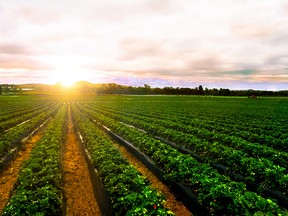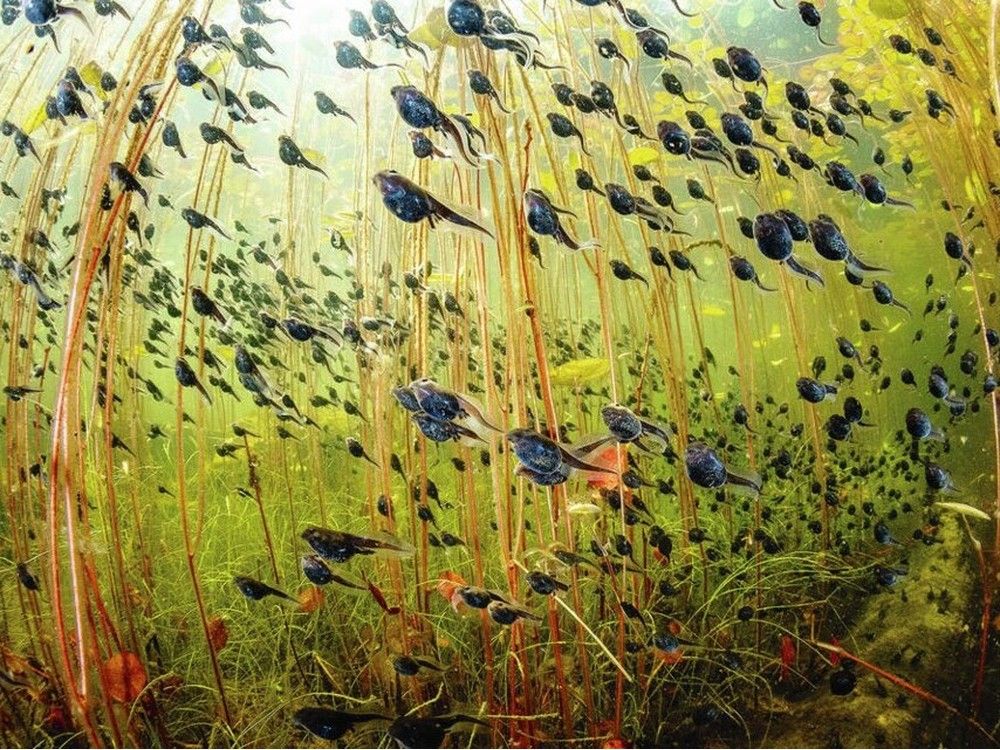Published Oct 13, 2024 • 3 minute read

As we gaze at the verdant fields of Saskatchewan or the salmon-rich waters of British Columbia, it’s easy to forget that merely 12,000 years ago much of Canada lay under kilometres of ice.
Advertisement 2
THIS CONTENT IS RESERVED FOR SUBSCRIBERS ONLY
Subscribe now to read the latest news in your city and across Canada.
- Unlimited online access to articles from across Canada with one account.
- Get exclusive access to the Toronto Sun ePaper, an electronic replica of the print edition that you can share, download and comment on.
- Enjoy insights and behind-the-scenes analysis from our award-winning journalists.
- Support local journalists and the next generation of journalists.
- Daily puzzles including the New York Times Crossword.
SUBSCRIBE TO UNLOCK MORE ARTICLES
Subscribe now to read the latest news in your city and across Canada.
- Unlimited online access to articles from across Canada with one account.
- Get exclusive access to the Toronto Sun ePaper, an electronic replica of the print edition that you can share, download and comment on.
- Enjoy insights and behind-the-scenes analysis from our award-winning journalists.
- Support local journalists and the next generation of journalists.
- Daily puzzles including the New York Times Crossword.
REGISTER / SIGN IN TO UNLOCK MORE ARTICLES
Create an account or sign in to continue with your reading experience.
- Access articles from across Canada with one account.
- Share your thoughts and join the conversation in the comments.
- Enjoy additional articles per month.
- Get email updates from your favourite authors.
THIS ARTICLE IS FREE TO READ REGISTER TO UNLOCK.
Create an account or sign in to continue with your reading experience.
- Access articles from across Canada with one account
- Share your thoughts and join the conversation in the comments
- Enjoy additional articles per month
- Get email updates from your favourite authors
Article content
The Canada we know today — a mosaic of thriving ecosystems and bountiful farmland — is the product of a remarkable transformation that began as the last glacial ice advance waned and the warm embrace of the Holocene’s interglacial period took hold.
Birth of Canadian Agriculture
Beginning about 11,000 years ago, the warmth of the Holocene and the receding of massive continental glaciers enabled people to farm. Humans transitioned from nomadic hunter-gatherer societies to more sustainable lifestyles with permanent settlements.
North America was no different, with Canadian flora and fauna thriving in the newfound warmth. Studies on the spatial and temporal pattern of climate change through the Holocene in Arctic Canada show the temperature profile to be quite complex, following changes at the global level.
By signing up you consent to receive the above newsletter from Postmedia Network Inc.
Article content
Advertisement 3
Article content
Much of northern Canada endured a scary little ice age in the 1500s, threatening to submerge again the continent’s vegetation under ice. Thankfully, the Earth returned to warming naturally by the 1700s.
The 20th century, in particular, saw considerable warming that has had profoundly positive impacts on Canada’s landscape and agricultural potential.
This recent rise in temperature has pushed the boundaries of arable land northward, extending growing seasons and opening new possibilities for cultivation. Crops like corn that were once considered impossible to grow in many parts of Canada are now thriving.
Recommended video
We apologize, but this video has failed to load.
“Warmer temperatures and longer frost-free seasons could increase productivity across the board, but especially in northern regions and southern and central Prairies,” reports Agriculture and Agri-Food Canada (AAFC). Additionally, it ensures higher rates of survival for young animals while reducing the cost of energy and livestock feed.
Advertisement 4
Article content
This climatic shift — combined with man-made increases in atmospheric CO2 concentrations that boost plant photosynthesis and with advances in agricultural technology — has contributed to a doubling of the size of the average Canadian farm in the last 50 years.
Better Growing Conditions Allowed for Diverse Crops
While traditional staples like wheat, barley, and canola remain important, they’re now joined by an impressive array of products like world-class apples, cherries and wine grapes in the Okanagan Valley and melons in Newfoundland.
According to the data from the Food and Agriculture Organization (FAO), Canada is now the world’s largest producer and exporter of lentils — a niche crop made popular in agrarian Canada by South Asian migrants. Experimentation with new crops and techniques has been a driving force behind Canada’s growing agricultural diversity and productivity.
Advertisement 5
Article content
The latest AAFC report says: “Production of all principal field crops (in 2024-2025) is estimated to have increased 1.8% year-over-year, which would be 2.4% above the previous five-year average.”
Higher rates of crop production mean more efficient animal husbandry. Despite the disruption of exports due to the bovine spongiform encephalopathy (mad cow disease) between 2003 and 2015, the export value of Canadian beef and veal more than tripled between 2013 and 2022.
The gross production value from agriculture is expected to almost double between 2018 and 2028. The annual growth of agricultural production value in the five years will be one of the highest.
Even those who subscribe to a fallacious apocalyptic vision of climate change acknowledge that “Canadian regions that were previously limited by shorter growing seasons may find new opportunities for agriculture, such as double cropping or cultivating crops that were not viable before.”
Advertisement 6
Article content
That human civilization has benefited immensely from warming of the last century and in earlier Holocene periods is undeniable. This reality is quite noticeable in Canada, as areas once unsuited for farming are now some of the most productive in the world.
Canadian farmers are thankful for the longer growing season and the greater abundance of atmospheric carbon dioxide that better feeds plants.
So should the rest of us.
After all, Earth is nearing the end of its current interglacial period and can expect the resurrection of kilometres-thick glaciers in coming millennia, according to the pattern of geological history.
— Vijay Jayaraj is a Science and Research Associate at the CO2 Coalition, Arlington, Va. He did his pre-doctoral studies at University of British Columbia, Canada. He holds an M.S. in environmental sciences from the University of East Anglia and a postgraduate degree in energy management from Robert Gordon University, both in the U.K., and a bachelor’s in engineering from Anna University, India.
Article content
.png)
 4 days ago
15
4 days ago
15


































 Bengali (BD) ·
Bengali (BD) ·  English (US) ·
English (US) ·